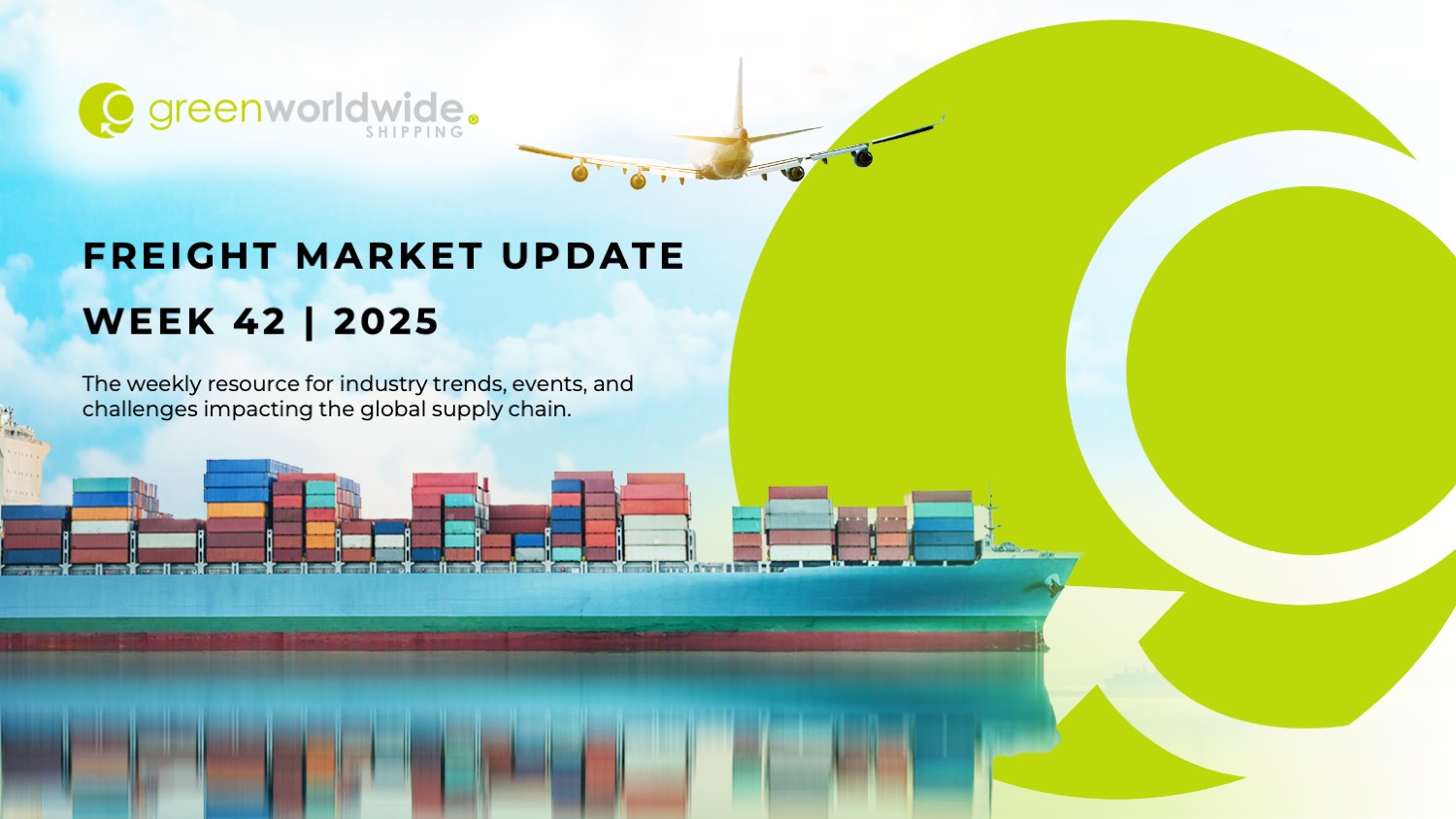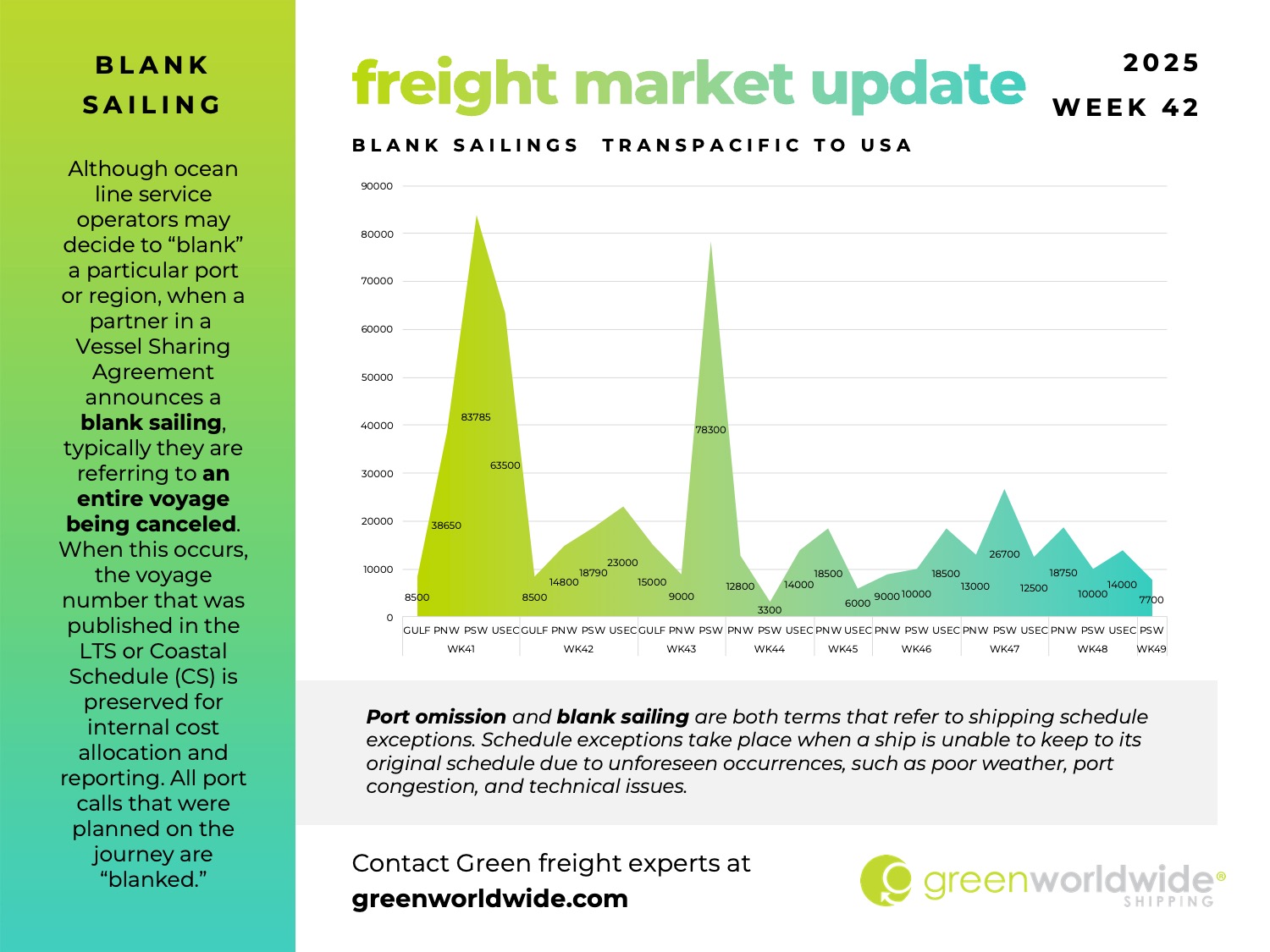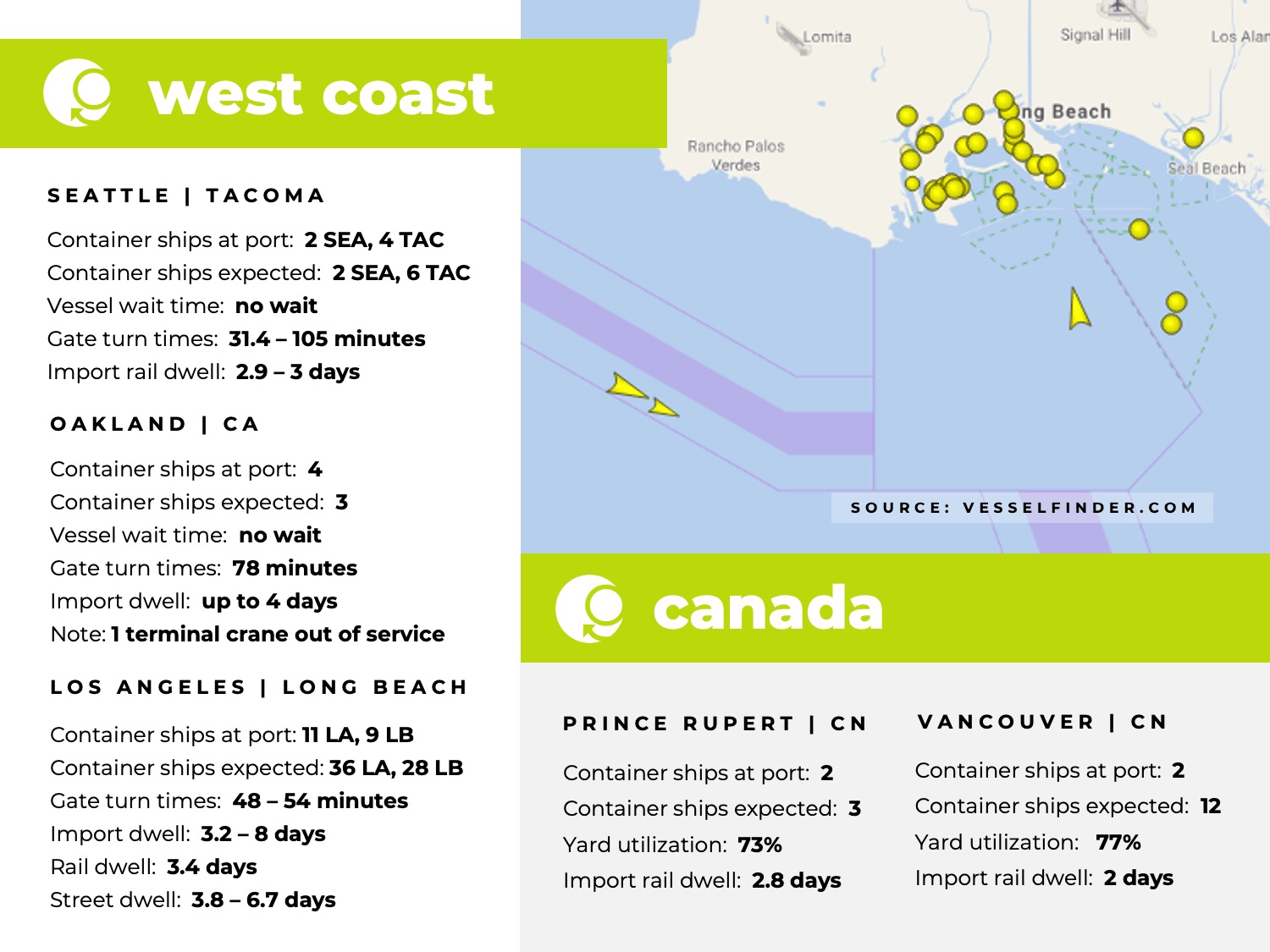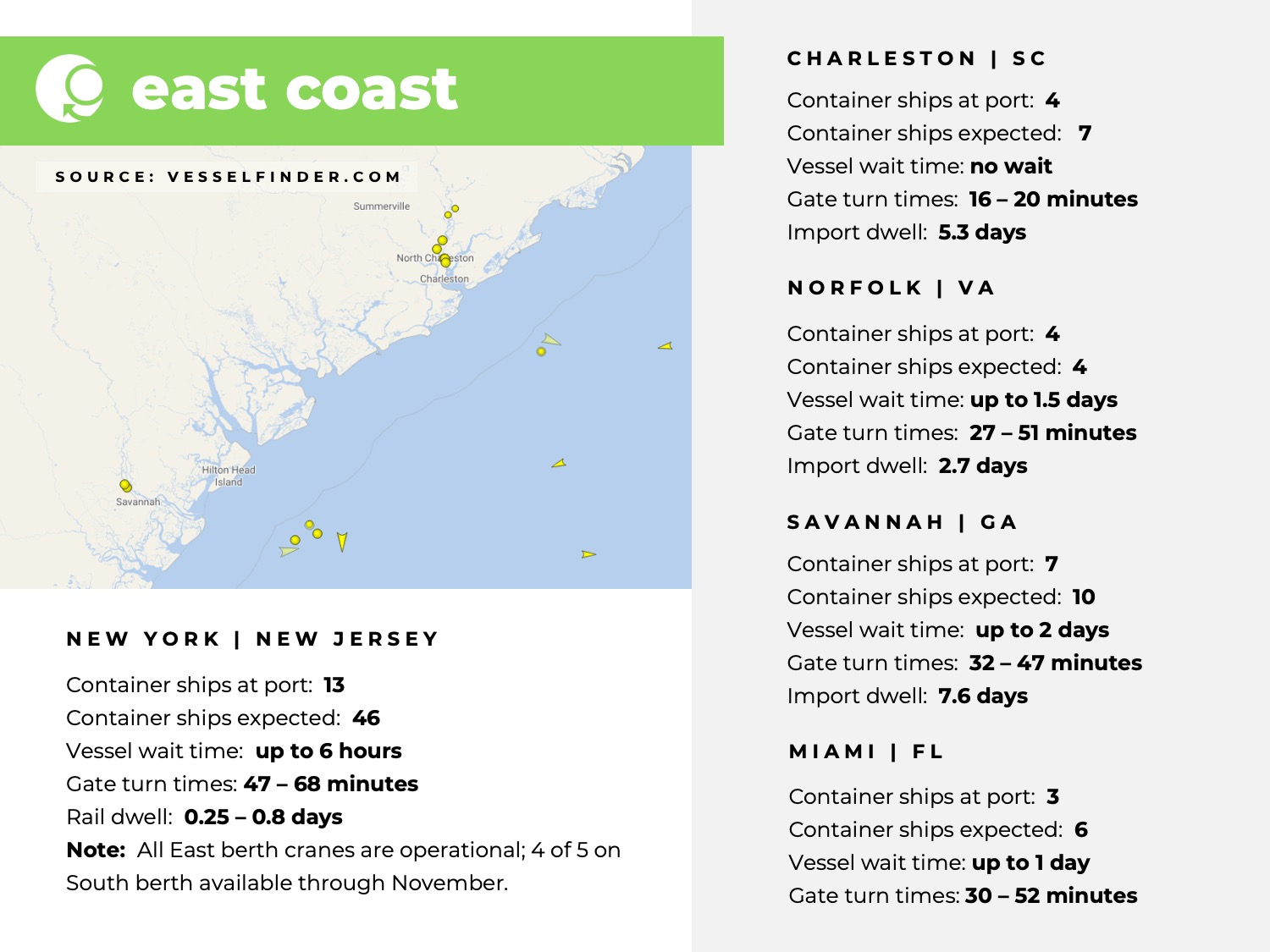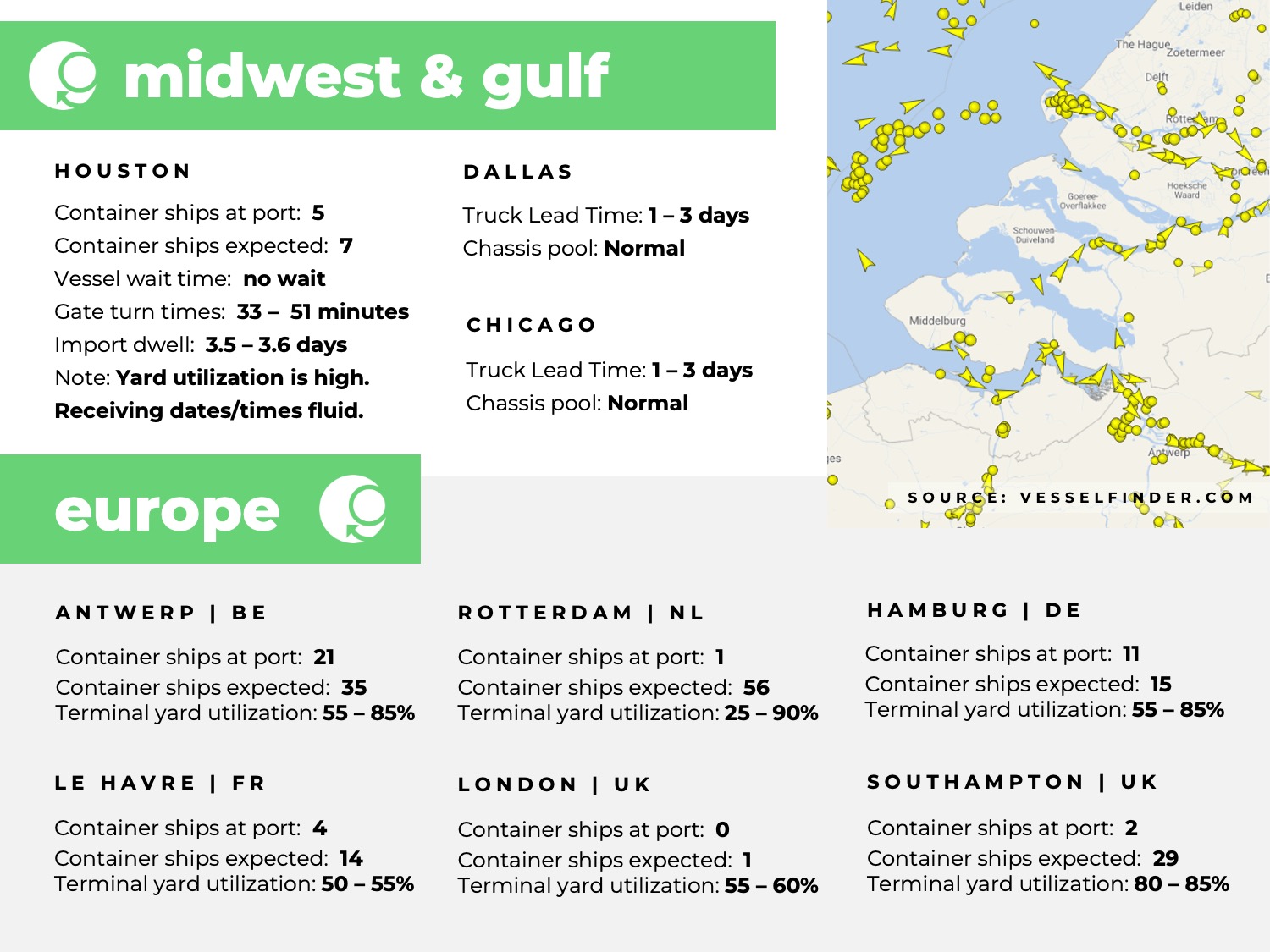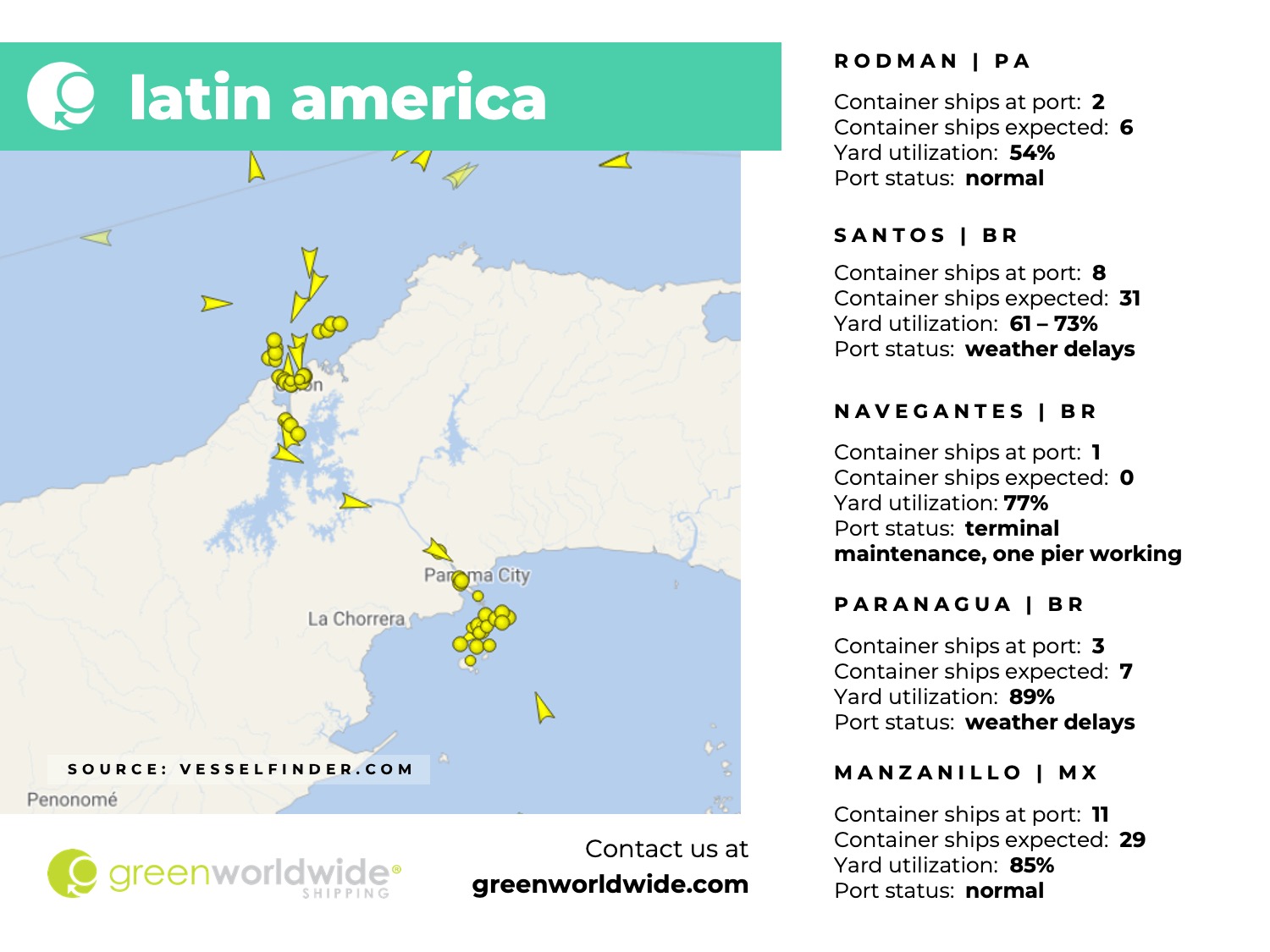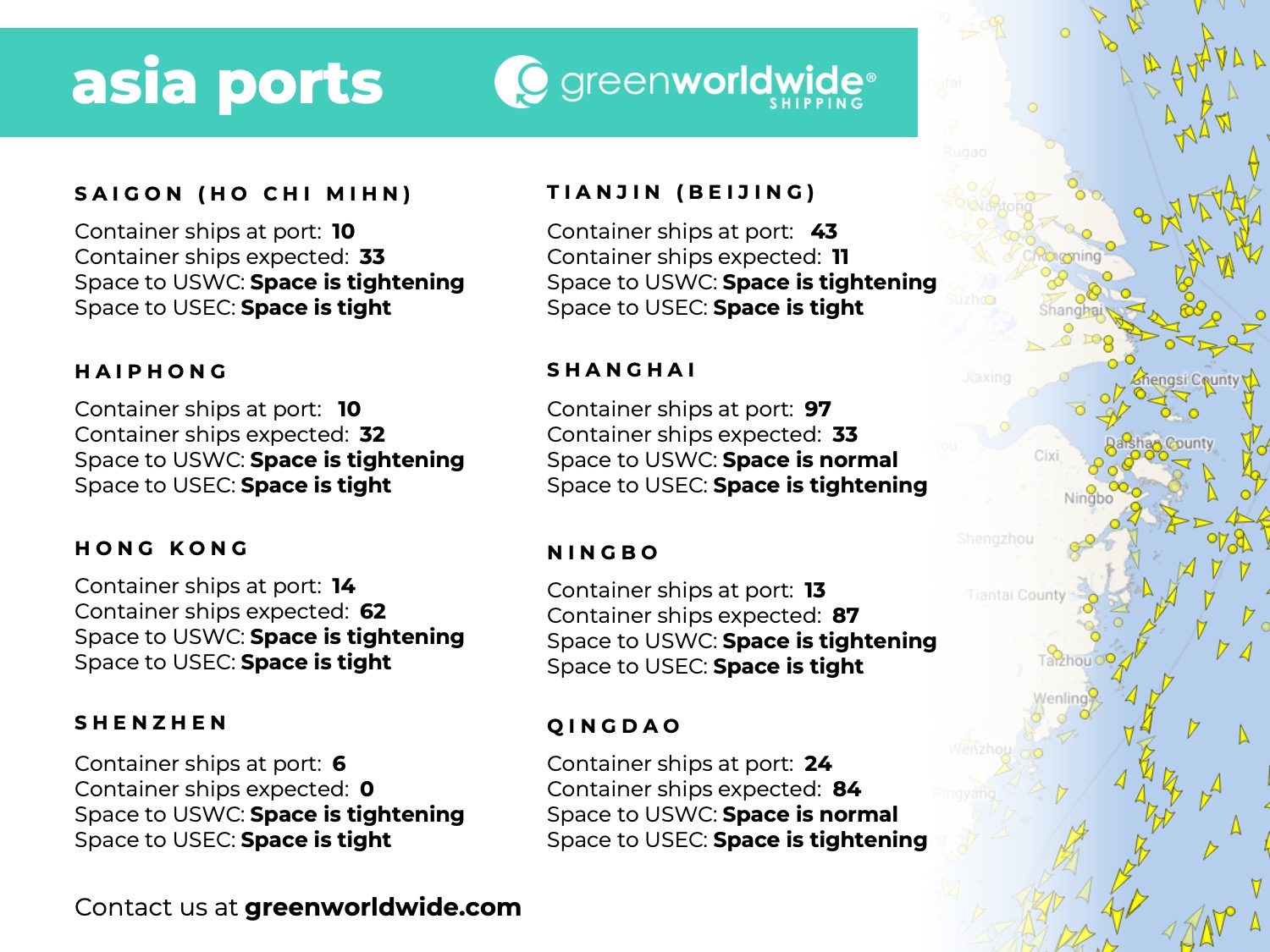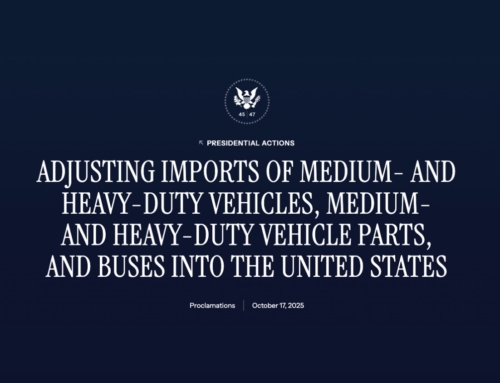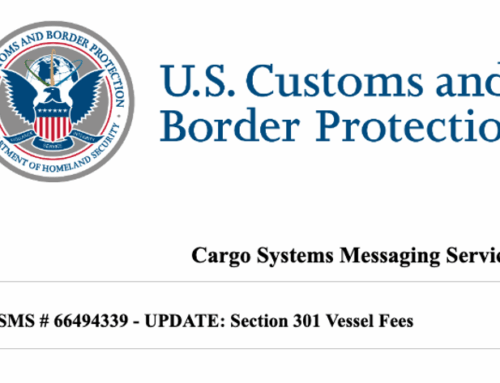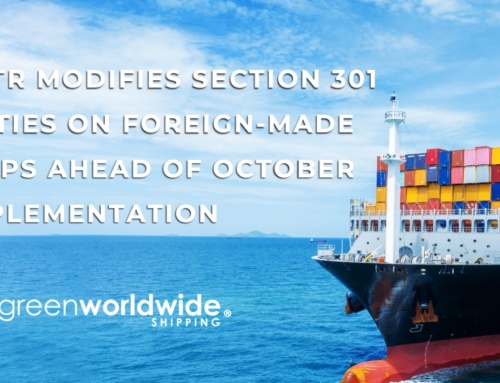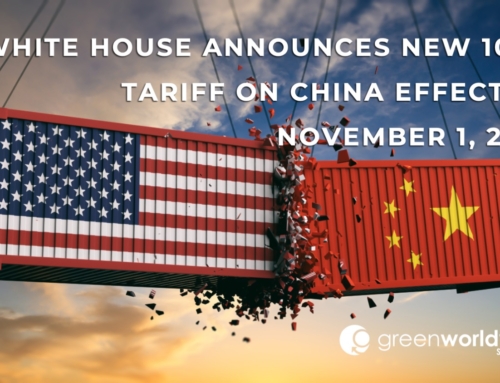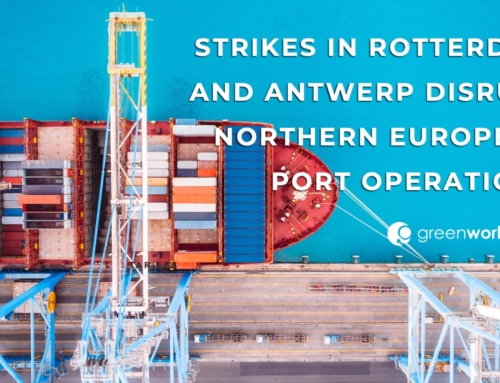U.S. AND CHINA INTRODUCE NEW TRADE MEASURES AND EXPORT CONTROLS
The White House announced plans to impose a 100 percent tariff on imports from China beginning November 1, 2025. The announcement follows China’s expansion of export controls on rare earth materials used in manufacturing and technology production. The United States also plans to implement new export restrictions on critical software the same day. These actions have increased uncertainty for importers managing Chinese-origin materials and production inputs, with formal guidance from USTR, BIS, and CBP still pending.
TRANS-PACIFIC CAPACITY ADJUSTMENTS AS IMPORTERS FRONTLOAD SHIPMENTS
Importers are advancing shipments ahead of the November 1, 2025 China-import tariff deadline, tightening short-term capacity on Trans-Pacific lanes. Carriers continue adjusting vessel deployments and port rotations to maintain schedule reliability and equipment availability. TS Lines will withdraw from its joint Long Beach service with SEALEAD and KMTC at the end of October, while other operators are monitoring utilization closely. If tariff uncertainty continues into November, analysts anticipate reduced import volumes and additional blank sailings as carriers balance tonnage across major Asian gateways.
SECTION 301 MARITIME MEASURES REALIGN VESSEL DEPLOYMENT
U.S. Customs and Border Protection began collecting Section 301 port fees on October 14, 2025, for vessels owned, operated, or built in China. Carriers are repositioning Chinese-built tonnage away from U.S. rotations to limit exposure while maintaining service stability. China implemented corresponding port fees on U.S.-flag and U.S.-built vessels the same day, creating parallel compliance requirements that are influencing fleet assignments and capacity planning across Trans-Pacific networks.
EUROPEAN PORT OPERATIONS SEE TEMPORARY RELIEF AT ROTTERDAM
The strike by Rotterdam’s container lashers has been suspended through October 18, 2025, while wage negotiations continue. Roughly 700 workers halted operations last week, creating a backlog of vessels awaiting berth. The suspension has provided temporary relief for cargo movement and inland transfers, though renewed strike action remains possible if no agreement is reached.
Stay up-to-date on freight news with Green’s Weekly Freight Market Update by following us on LinkedIn. For continuous updates, make sure to check out our website at greenworldwide.com.

